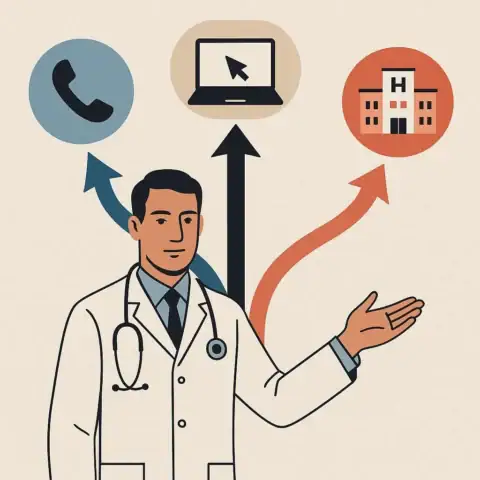Ask any provider why they got into medicine, and the answer is almost always the same: “I wanted to help patients.” Most didn’t expect the mountain of paperwork tied to each patient visit, examination and test. Every year, the administrative load in healthcare grows—and it’s wearing providers down.
“The paperwork we need to diagnose and treat patients just keeps piling up,” says Dr. Haroon Arshad, a board-certified family medicine physician. “For patients, it means delays in getting treatment. For providers, it’s hours lost to forms instead of focusing on care.”
Providers now spend two hours on electronic health records (EHR) for every one hour with patients. In 2022, nearly two-thirds of doctors reported burnout from the administrative load, which can lead to more medical errors and lower patient satisfaction.
Fortunately, medical burnout is finally declining—dipping below 50% for the first time in years—but rates are still too high. Continued focus on this issue is essential.
The solution to burnout isn’t simple, but a more proactive healthcare system can make a meaningful difference. Proactive care offers opportunities to lighten the admin load and let providers focus on what they do best: caring for patients.
How Proactive Care Can Ease Healthcare’s Administrative Burden
One of the biggest challenges in US healthcare is that many patients don’t have a regular doctor or routine checkups. Without consistent care, they only seek medical attention when serious issues arise or symptoms become urgent.
Unplanned hospital visits are the most paperwork-heavy, involving extensive documentation, approvals, and billing. These visits, when non-urgent, are inefficient for patients and providers.
Alternative care models like telehealth and remote patient monitoring support a more proactive approach, enabling patients and providers to touch base regularly. This helps providers catch issues early, reducing the need for hospitalizations or other emergency interventions.
These checkups also simplify documentation and allow patients to pre-register with health systems. New patients require mountains of paperwork, but returning ones can skip steps like providing medical history, insurance details, and consent forms.
Other proactive programs like transitional care and chronic disease management help too. These improve patient outcomes and reduce hospital readmissions for patients with ongoing conditions—further easing the administrative burden on healthcare providers.
Managing Burnout: Practical Tips
Systemic changes, like new care delivery models, take time. Doctors grappling with burnout need immediate support.
Dr. Arshad, who’s experienced symptoms of burnout himself, shared some practical advice.
“First, recognize the symptoms,” he said. “If you’re feeling disinterested in your work or frustrated with patients, it’s a sign you’re carrying too heavy a load.”
Burnout symptoms often include exhaustion, cynicism, detachment, and even physical issues like headaches or trouble sleeping.
“Second, take breaks. As providers, we’re used to giving 110% all the time, but that can wear us down. Whenever I step away, I come back energized and excited to work with patients again. Time away makes me better at my job.”
As a final step, remember that resources are available. Whether through employee assistance programs (EAPs), in-house wellness programs, or simply reaching out to colleagues, managing burnout begins with open communication.

Reducing administrative bloat will take action from regulators, insurers, and providers. But instead of waiting for a system-wide overhaul, we can take steps to improve our health now—and it starts with embracing proactive care.
Proactive care models reduce hospital visits, streamline patient-provider relationships, and enable regular check-ups, easing many of the administrative burdens ailing the healthcare system today.
And when all else fails, Dr. Arshad’s words are a good reminder: don’t underestimate the power of a healthy break to recharge.








